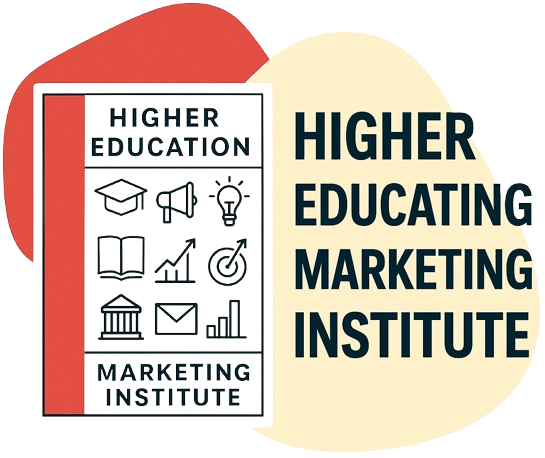
Coinciding with the unprecedented global pandemic, the higher education sector has been confronted with significant challenges.
The outbreak of COVID-19 has disrupted traditional modes of instruction, leading to a swift and transformative shift in student recruitment and budget allocation strategies.
In response to these disruptions, enrollment marketers are increasingly acknowledging the power of Search Engine Optimization (SEO) as a means to efficiently and cost-effectively achieve admissions goals.
By decreasing reliance on paid search and name purchases, SEO offers a long-term strategy for sustainability.
Moreover, it plays a crucial role in driving organic traffic and attracting qualified prospects to university websites, particularly as the college search process for Generation Z increasingly unfolds online.
This article explores the profound impact of COVID-19 on higher education, the resultant shifts in enrollment strategies, and the growing importance of organic traffic in the digital landscape.
By prioritizing SEO and adapting to Google’s algorithm updates, institutions can effectively navigate the current landscape and secure their position in the competitive higher education market.
Key Takeaways
- COVID-19 has accelerated the need for more efficient and cost-effective ways to reach admissions goals in higher education.
- SEO plays a crucial role in enrollment marketing as a long-term strategy for sustainability and decreasing dependence on lead generation through paid search.
- Gen Z’s online college search highlights the importance of ranking for non-branded keywords for brand recognition and competing against competitors.
- The test-optional trend in college applications emphasizes the need for a strong SEO strategy, as it reduces the number of test-takers.
The Impact of COVID-19

The COVID-19 pandemic has significantly affected higher education, resulting in an accelerated change in student recruitment strategies and budget allocation, leading to a greater need for more efficient and cost-effective ways to reach admissions goals.
Colleges and universities have been forced to adapt quickly to the new normal, with traditional recruitment methods such as campus visits and in-person events being limited or even eliminated. As a result, institutions have turned to digital marketing strategies to engage with prospective students.
This is where the power of SEO comes into play. By implementing a strong SEO strategy, higher education institutions can drive organic traffic and qualified prospects to their websites. This not only decreases dependence on lead generation through name purchases and paid search but also helps in brand recognition and competing against competitors by ranking for non-branded keywords.
Shifts in Enrollment Strategies
In response to the changing landscape of student recruitment, universities have been compelled to reevaluate their enrollment strategies and explore alternative approaches to achieving their admissions goals.
The COVID-19 pandemic has accelerated the need for more efficient and cost-effective ways to reach prospective students. One strategy that has gained prominence is the use of Search Engine Optimization (SEO) in enrollment marketing. By focusing on long-term sustainability and decreasing dependence on lead generation through name purchases and paid search, universities can drive organic traffic and qualified prospects to their websites.
Additionally, the test-optional trend in college applications has further emphasized the importance of a strong SEO strategy. As Google’s algorithm updates emphasize delivering value and unique content, universities must adapt to new lead sources and incorporate SEO into their content strategies.
By capitalizing on long-form content and telling their institutions’ stories authentically, universities can improve their organic search rankings and attract prospective students effectively.
Importance of Organic Traffic

Universities are increasingly recognizing the significance of organic traffic in their enrollment marketing strategies. Organic traffic refers to the visitors who come to a website through non-paid search engine results. It is considered valuable because it indicates that the website is ranking well on search engine result pages (SERPs) and attracting visitors without the need for paid advertising. This is particularly important in the current higher education landscape, where institutions are looking for more cost-effective ways to reach their admissions goals. By focusing on search engine optimization (SEO) and improving their organic search rankings, universities can drive qualified prospects to their websites and increase brand recognition. This can be achieved by creating high-quality, informative, and relevant content that aligns with the search intent of prospective students.
| Pros | Cons |
|---|---|
| Cost-effective | Takes time to see results |
| Long-term sustainability | Requires continuous optimization |
| Drives qualified prospects | Increased competition for rankings |
| Builds brand recognition | Need for expertise and resources |
| Capitalizes on long-form content | Limited control over search engine algorithms |
Conclusion
In conclusion, the COVID-19 pandemic has significantly affected higher education, leading to changes in enrollment strategies and budget allocation.
To adapt to these shifts, enrollment marketers are recognizing the power of SEO in driving organic traffic and qualified prospects to their websites. By ranking for non-branded keywords and incorporating SEO into their content strategy, institutions can increase brand recognition and effectively compete against competitors.
For example, a case study showed that a university’s organic search rankings improved by implementing an SEO strategy, resulting in a significant increase in website traffic and prospective student engagement.
Overall, SEO provides a long-term and cost-effective solution for achieving admissions goals in the digital age.




